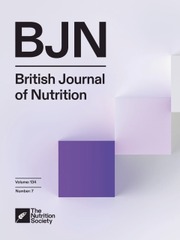No CrossRef data available.
Article contents
Impact of (poly)phenol-rich dietary sources on DNA damage: Insights from human intervention studies using the Comet assay – a review and perspective
Published online by Cambridge University Press: 07 April 2025
Abstract
(Poly)phenols are plant-derived food bioactives abundantly present in human diet. They exert positive effects on various aspects of human health, and in particular in reducing the risk of chronic non-communicable diseases. Dietary (poly)phenols have been reported to improve vascular function, blood lipids, insulin sensitivity, and to decrease systemic inflammation. Evidence also suggests that (poly)phenols may exert protective effects on DNA, by reducing the extent of its damage. In recent years, advanced analytical methods, including transcriptomics, metabolomics, proteomics, and metagenomics, have been employed to unravel the complex impact of (poly)phenols in health and disease. Advances in bioinformatics enable an integrated multi-omics approach to data analysis, opening avenues for discovering new, previously unknown molecular mechanisms of action. Innovative solutions and automation of the Comet assay offer new opportunities for more in-depth analysis of the impact of (poly)phenols on DNA damage and its inclusion in integrative bioinformatic models. Such an approach has the potential to uncover new multi-level interactions and to reveal previously unknown factors underlying inter-individual variabilities in health-promoting effects of (poly)phenols. This review provides an insight into the application of the Comet assay in human intervention studies using (poly)phenol-rich dietary sources. Recent advancements in the Comet assay technology, and the prospects for more extensive use of this method in future human intervention studies with (poly)phenols could contribute to the development of personalized dietary recommendations for these plant-derived food bioactives.
Keywords
- Type
- Review
- Information
- Copyright
- © The Author(s), 2025. Published by Cambridge University Press on behalf of The Nutrition Society


